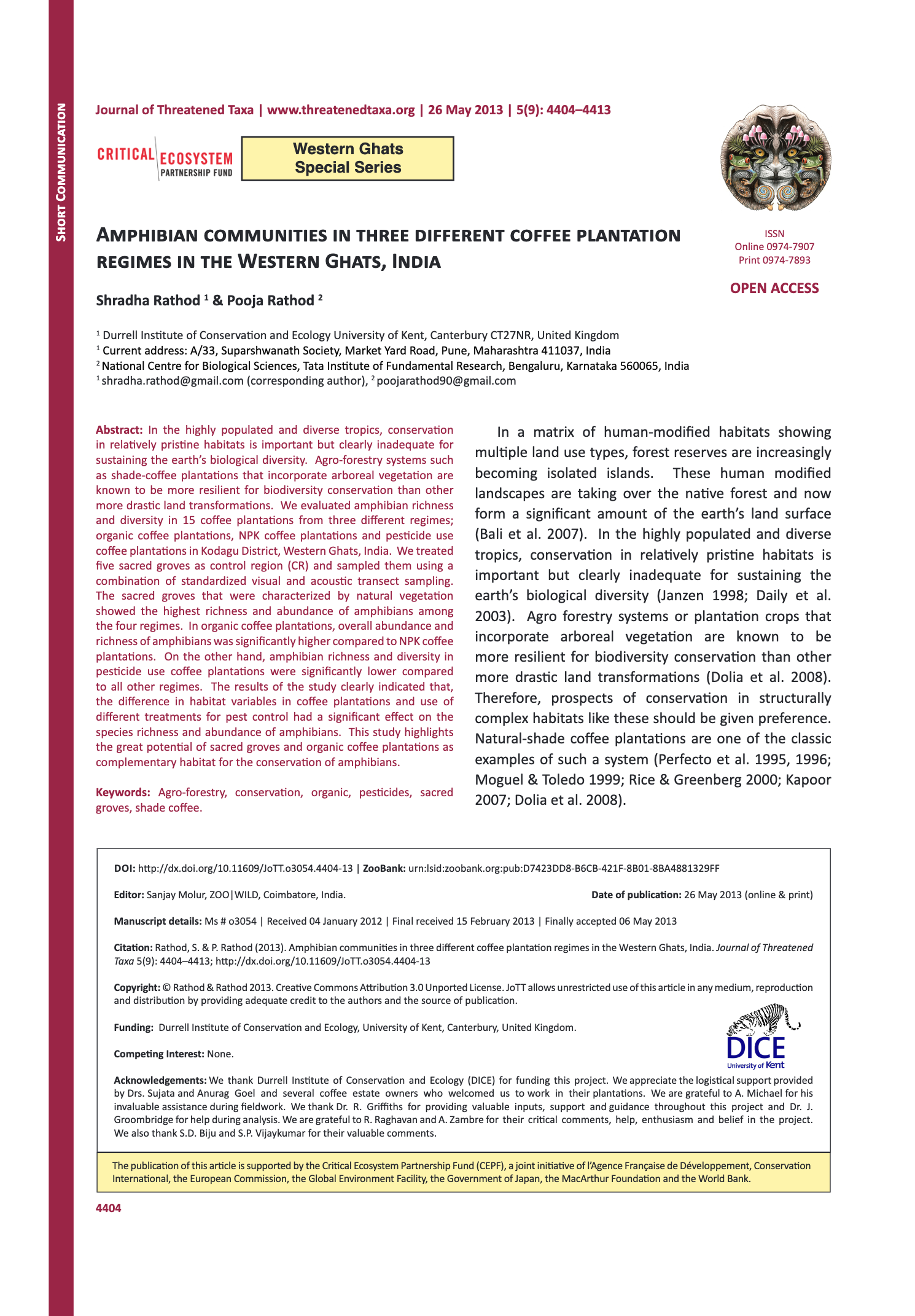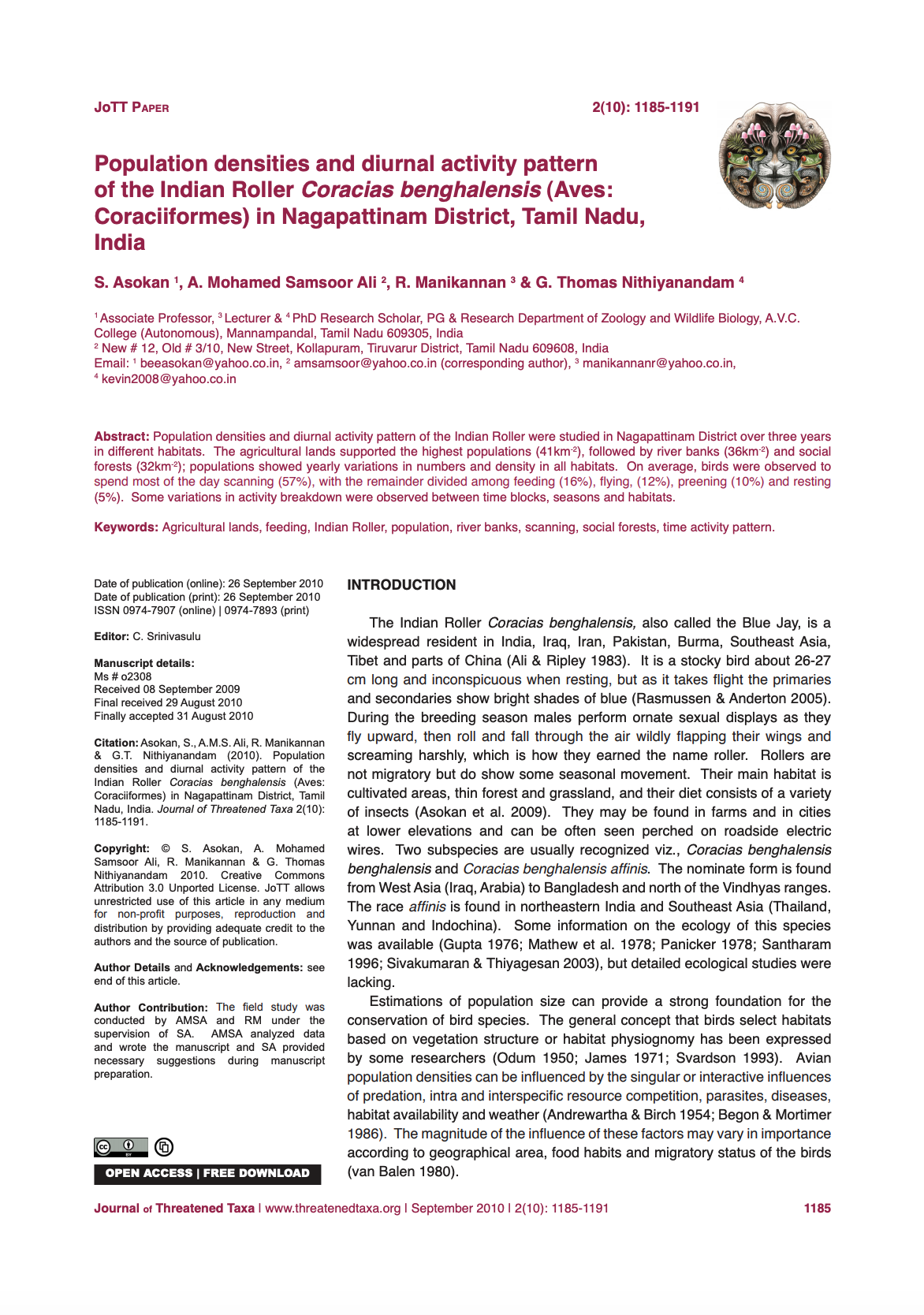Location
The Journal of Threatened Taxa is an open access and print, peer-reviewed, monthly (not including supplementary and special issues and monographs), rapid, international journal on conservation and taxonomy. The Journal is abbreviated as JoTT. The official shorter version of the Journal name is J. Threat. Taxa
JoTT is a platform for quick and timely publication of research, findings, reviews and other aspects of science related to conservation and taxonomy including subject areas such as ecology, behavior, physiology, methodology, veterinary, diseases, management, models, data, among other relevant topics of conservation biology that have a direct or substantial impact on the knowledge, distribution, status, threats and conservation of native fauna, flora and fungi.
JoTT encourages professional and amateur/upcoming scientists from around the world to publish. The Journal provides assistance and mentors first time writers and writers from non-native English language countries in presenting science to the world.
On an average, JoTT publishes 100 research articles and reviews every year. In 2016, JoTT published 183 articles with 111 research articles, communications and reviews.
Members:
Resources
Displaying 1 - 2 of 2CEPF Western Ghats Special Series : Amphibian communities in three different coffee plantation regimes in the Western Ghats, India
In the highly populated and diverse tropics, conservation in relatively pristine habitats is important but clearly inadequate for sustaining the earth biological diversity. Agro-forestry systems such as shade-coffee plantations that incorporate arboreal vegetation are known to be more resilient for biodiversity conservation than other more drastic land transformations.
Population densities and diurnal activity pattern of the Indian Roller Coracias benghalensis (Aves: Coraciiformes) in Nagapattinam District, Tamil Nadu, India
Population densities and diurnal activity pattern of the Indian Roller were studied in Nagapattinam District over three years in different habitats. The agricultural lands supported the highest populations (41km-2), followed by river banks (36km-2) and social forests (32km-2); populations showed yearly variations in numbers and density in all habitats. On average, birds were observed to spend most of the day scanning (57%), with the remainder divided among feeding (16%), flying, (12%), preening (10%) and resting (5%).



